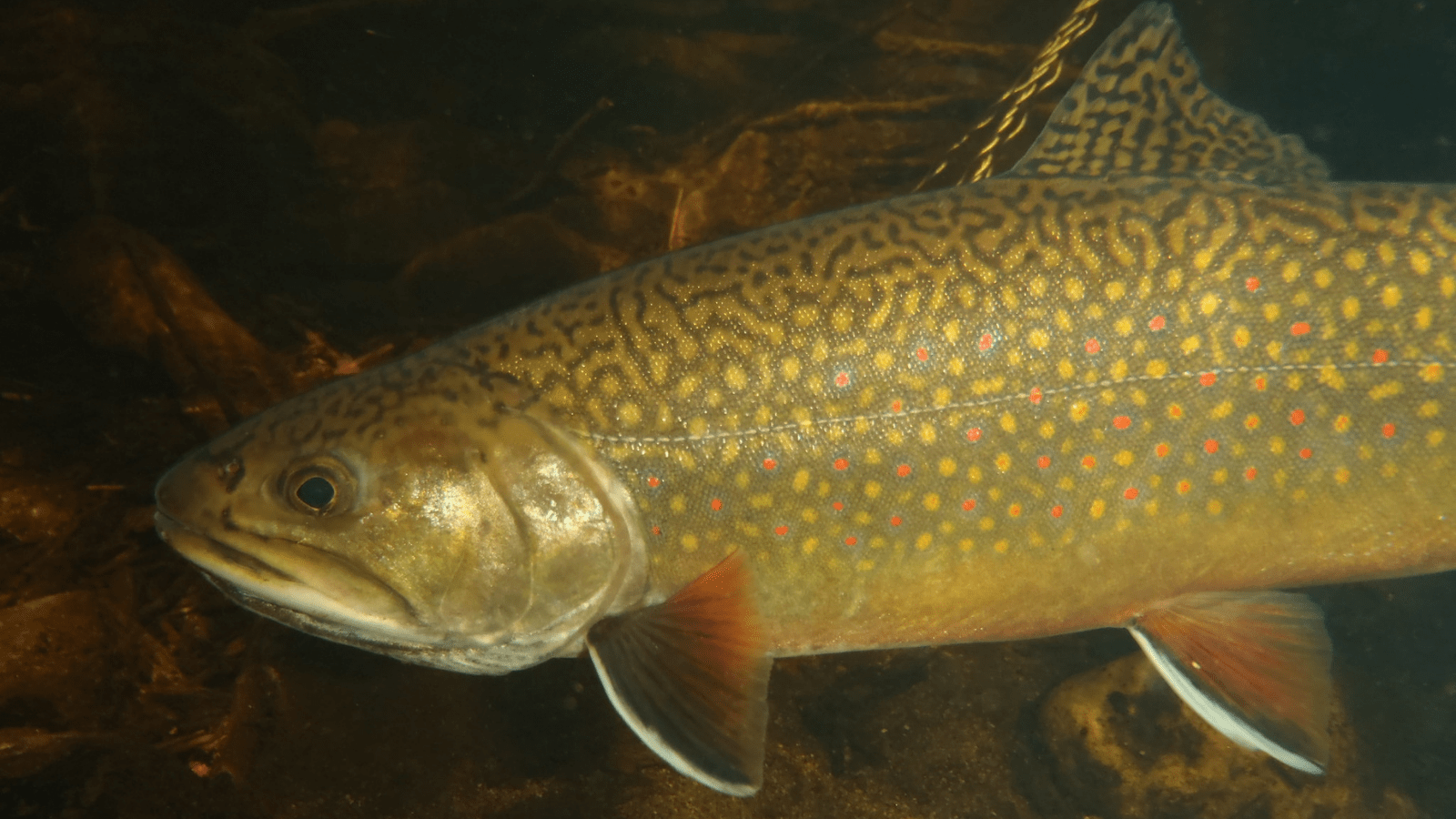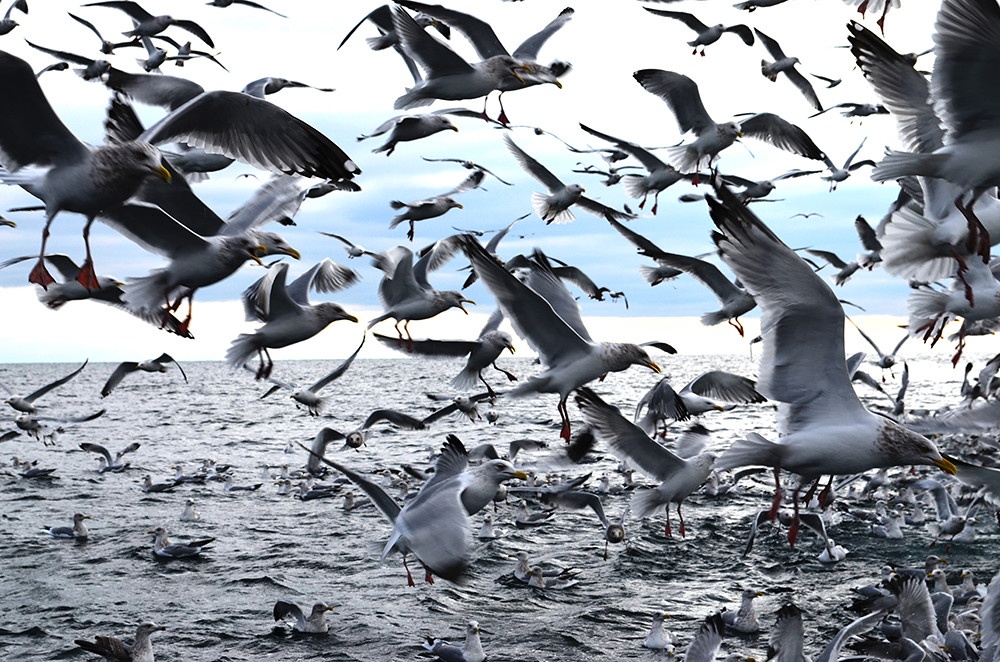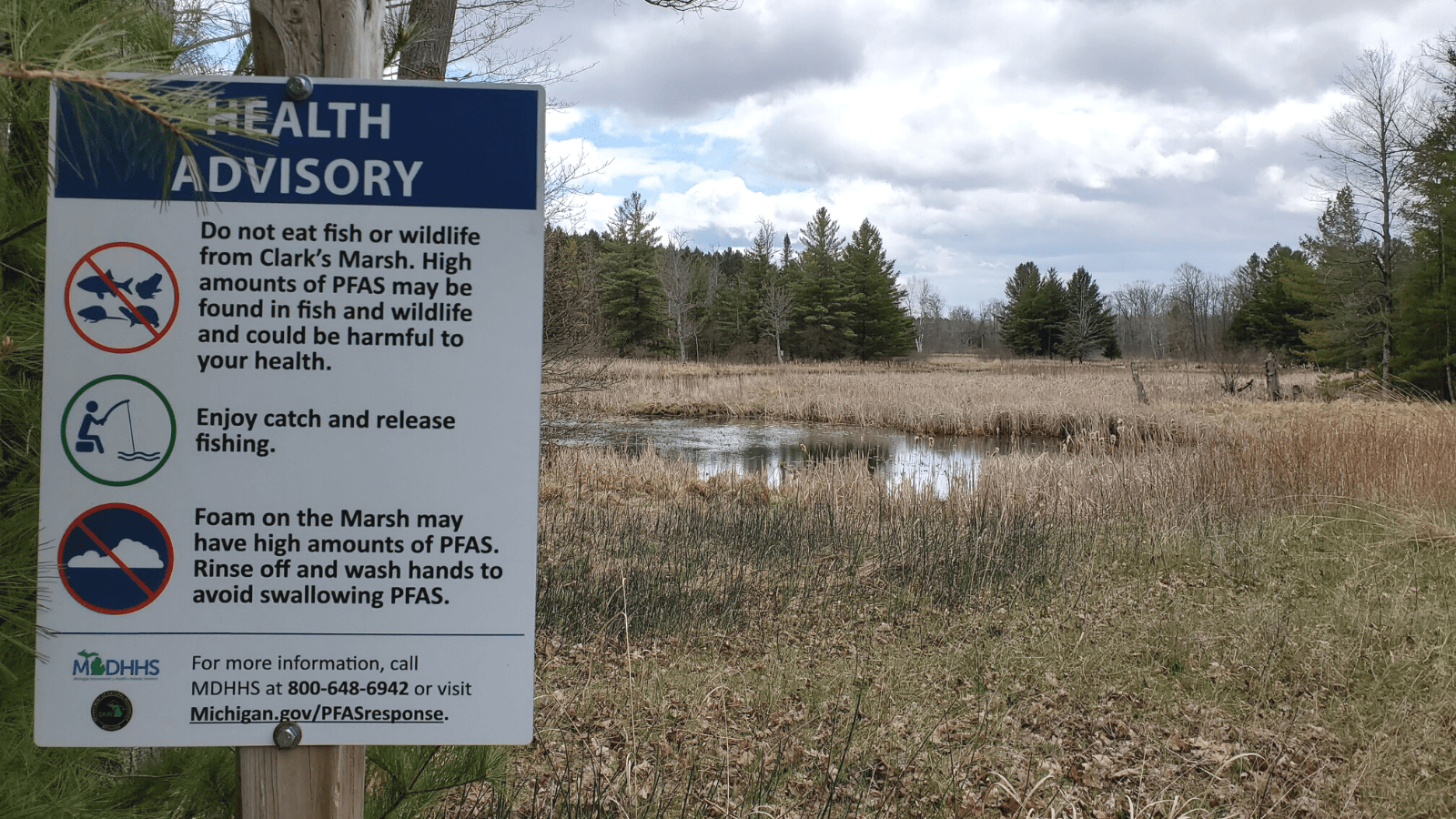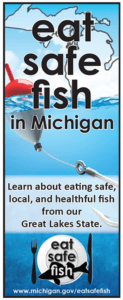We have much more to do and your continued support is needed now more than ever.
PFAS Are Contaminating Our Fish – What This Means and What We Should Do About It

If you enjoy fishing, you have probably come across signs by lakes or streams recommending that you limit your consumption of certain fish—or even avoid eating them altogether. You may have been confused or frustrated by such limits, especially if you have been fishing in the area for a while. And if you depend on the fish you catch to sustain yourself, you may wonder: what else am I supposed to do?
Although these signs may be discouraging, they serve a very important purpose—to protect people from contamination. States put them up to notify the public of fish consumption advisories (FCAs) that they have issued for particular water bodies. FCAs are warnings that there is such a dangerous amount of contamination in fish that humans should limit or avoid eating those fish until the contamination is remediated.
What Fish Consumption Advisories Do
An FCA is, as defined by the USEPA, a “recommendation to limit or avoid eating certain species of fish or shellfish caught from specific water bodies or types of water bodies (e.g., lakes, rivers or coastal waters) due to contamination.” These are nonbinding, voluntary consumption recommendations that are typically addressed to either the general public or to groups of people who may be more at risk from the particular contaminants present in fish.
Vulnerable groups may include communities that eat a high volume of fish, pregnant women, or children. States and tribes can issue their own advisories and have broad discretion to choose which contaminants, fish species, human populations, and bodies of water to include. For states, the agency in charge varies, but usually, the relevant environmental and health agencies are involved.

FCAs serve multiple purposes. First, they can provide evidence that a water body is failing to achieve a state’s water quality standards—in other words, that the water body is impaired. Water quality standards include designated uses of a water body that states determine to be beneficial and worthy of protection, such as aquatic life and recreation.
All states have established fish consumption as a designated use of their surface waters statewide. Depending on the state, if a state environmental agency determines that a water body is impaired due to elevated concentrations of a pollutant in fish tissue, it must list the water body as impaired pursuant to section 303(d) of the federal Clean Water Act.
This triggers a requirement that the state calculate the maximum amount of that pollutant allowed to enter a water body in order to meet water quality standards. The goal of this process is to improve water quality by reducing levels of pollutants that are contributing to a water body’s impairment.

Second, FCAs communicate risks to the public so that people can make informed decisions regarding their consumption of fish. Ideally, advisories are both prominently displayed and widespread. There should be signage in multiple locations along affected water bodies, including by common entry spots.
Moreover, FCAs should clearly and accurately explain the relevant risks and be translated into languages appropriate to the local community. Translated signage should provide individuals who do not speak English as their primary language and who have a limited ability to read, write, speak, or understand English – also known as limited English proficient (LEP) individuals – with the same level of access to information communicated in FCAs.
In practice, though, state agencies do not always effectively communicate to key audiences for one reason or another. For example, an EPA-funded study found that brochures, which are a common way states communicate FCAs, can be effective in theory, but are less so in practice because not every angler receives one. This could be due to a lack of internet access, or lack of a permanent address. Even those anglers who do get a brochure may not read it, especially if it is sent to them unsolicited.
Fish Consumption Advisories and PFAS
FCAs were first issued in the Great Lakes region in the 1970s for the toxic chemical mercury. These advisories have since expanded to include contaminants such as DDT, PCBs and per- and polyfluoroalkyl substances (PFAS). FCAs for PFAS have only begun to crop up in the last decade or so, but are becoming increasingly common. This is largely for two reasons: first, while research on PFAS is still emerging, there is substantial evidence that PFAS are widespread in the environment and can have harmful effects on wildlife and humans. And second, agencies are sampling for PFAS more and more and finding them in many places.
The family of PFAS contains more than 4,000 compounds. PFAS are made up of linked carbon atoms, with fluorine atoms replacing some or all of the hydrogens that could otherwise be part of the compound. This chemical structure makes them useful in commercial and industrial applications because they are very stable and water- and oil-repellent. Despite some efforts to phase out or limit their use, PFAS remain ubiquitous. They can be found in hundreds of items such as water-repellent clothing, food-contact packaging, fire-fighting foams, and even some pesticide containers.
PFAS can enter the environment in a variety of ways. For example, industrial facilities manufacturing PFAS or products using them often discharge the chemicals into a nearby river or emit them into the air. The very properties that make PFAS so useful in products make them problematic in the environment. Their persistence means they can cycle through soils and water without breaking down, as well as build up in fish and other wildlife. Some PFAS can also biomagnify, or become more concentrated as they move up the food chain, leading to higher exposures to people and fish-eating wildlife.
PFAS have even been found at concerning levels in deer, which is unusual, given limited research on PFAS uptake by vegetation that deer eat. As a result, a consumption advisory was necessary for deer at Clark’s Marsh, a highly contaminated site in Oscoda, Michigan. While many effects of PFAS on human health are still unknown, research suggests that exposure to (relatively) high levels of certain PFAS may lead to problematic health outcomes including increased cholesterol levels, decreased vaccine response in children, and increased risk of kidney or testicular cancer.
PFAS FCAs are currently in place in Ontario and five of the Great Lakes states – Indiana, Michigan, Minnesota, New York, and Wisconsin. The most common PFAS compound that has led to advisories is perfluorooctanesulfonic acid (PFOS) due to its high levels in the environment and its tendency to bioaccumulate and biomagnify. State agencies usually sample for PFOS, perfluorooctanoic acid (PFOA), and sometimes other PFAS compounds.
Concentrations that prompt advisories vary from agency to agency, leading to different advice depending on where you live. For example, USEPA’s recommended safe daily exposure value, used by several Great Lakes states, is three times lower than Ontario’s. Many fish species are affected, including walleye, crappie, and sunfish.
Currently, most FCAs apply to inland water bodies (rivers, lakes) rather than the Great Lakes proper. That is not to say PFAS in the Great Lakes are not an issue—in fact, recent FCAs for rainbow smelt from Lake Superior issued by Michigan and Wisconsin suggest otherwise—there may need to be more monitoring and more protective protocols.
Why It Matters That We Are Seeing More Fish Consumption Advisories Based on PFAS
The increasing number of FCAs based on PFAS has major equity and justice implications. Although data concerning consumption patterns is often limited, subsistence angling communities – which often consist of people of color, low-income individuals, and Indigenous people – tend to catch and eat more locally caught fish. At the same time, these subpopulations are often less likely to be aware of the existence of FCAs or the risks of eating contaminated fish compared to the general population.
This is sometimes due to poor communication on the part of agencies issuing FCAs. Moreover, even when people are aware of existing advisories, they may be reluctant or unable to follow them for cultural or economic reasons. All in all, this means that subsistence anglers may experience higher exposures to hazardous chemicals such as PFAS.
One need not look far to see how FCAs based on PFAS are affecting communities in the Great Lakes region. In Oscoda, Michigan – where the highly contaminated Wurtsmith Air Force Base is located – there are numerous FCAs in place due to extremely high levels of PFAS, including one advisory warning people not to eat any fish (or wildlife) taken from Clark’s Marsh.
But as a relatively low-income area abundant with wildlife, Oscoda is home to many people for whom living off the land is both a necessity and a way of life. This means that for many, such as longtime Oscoda resident Lowell Miller, it is simply not an option to give up subsistence fishing. Lowell has fished from local water bodies like Van Etten Lake, Cedar Lake, Clark’s Marsh, and the Au Sable River for his entire life – in his words, “all I do is fish.”

According to Lowell, there was initially a great deal of disbelief and confusion in the Oscoda community after the state of Michigan posted signs warning people about PFAS in fish. But for him, this new information hit home in a tragic way. Not long afterward, his mother was diagnosed with and later passed away from a rare form of cancer that may have been related to PFAS exposure from fish and wildlife consumption.
While his mother’s passing has made Lowell all too aware of the FCAs in the area and the risks of consumption of local fish, he largely continues to eat the fish he catches. “Locals who are up here full time have to do what they have to do to survive,” Lowell says. “People just don’t have the means to travel around to other fisheries that don’t have this problem.”
The Future of Fish Consumption Advisories
Going forward, it is essential that state agencies – in collaboration with other researchers and federal partners – fill in existing data and science gaps when it comes to PFAS and fish consumption. More monitoring data will help us better understand exactly how pervasive PFAS contamination is in the Great Lakes Basin. Moreover, we need more information relating to health concerns associated with less-studied PFAS compounds and the cumulative or interactive effects that exposure to multiple compounds may cause. In the meantime, all states should treat FCAs as presumptive evidence of the need for an impairment designation and hence a plan to address the underlying contamination problem.
Finally, it bears repeating that FCAs are only guidelines that cannot be enforced. Placing the burden on people to avoid potential risks of fish consumption is not an effective long-term strategy to protect public health and wildlife, as it does not address the contamination that prompts the need for advisories in the first place.
FCAs should only be a temporary measure. The more equitable and permanent solution is to reduce contamination to levels where advisories are no longer needed so that people can enjoy the health and other benefits of fish consumption. At the same time, states should ensure that active FCAs effectively communicate risks of consumption to affected populations, particularly those that may be at greater risk.






















